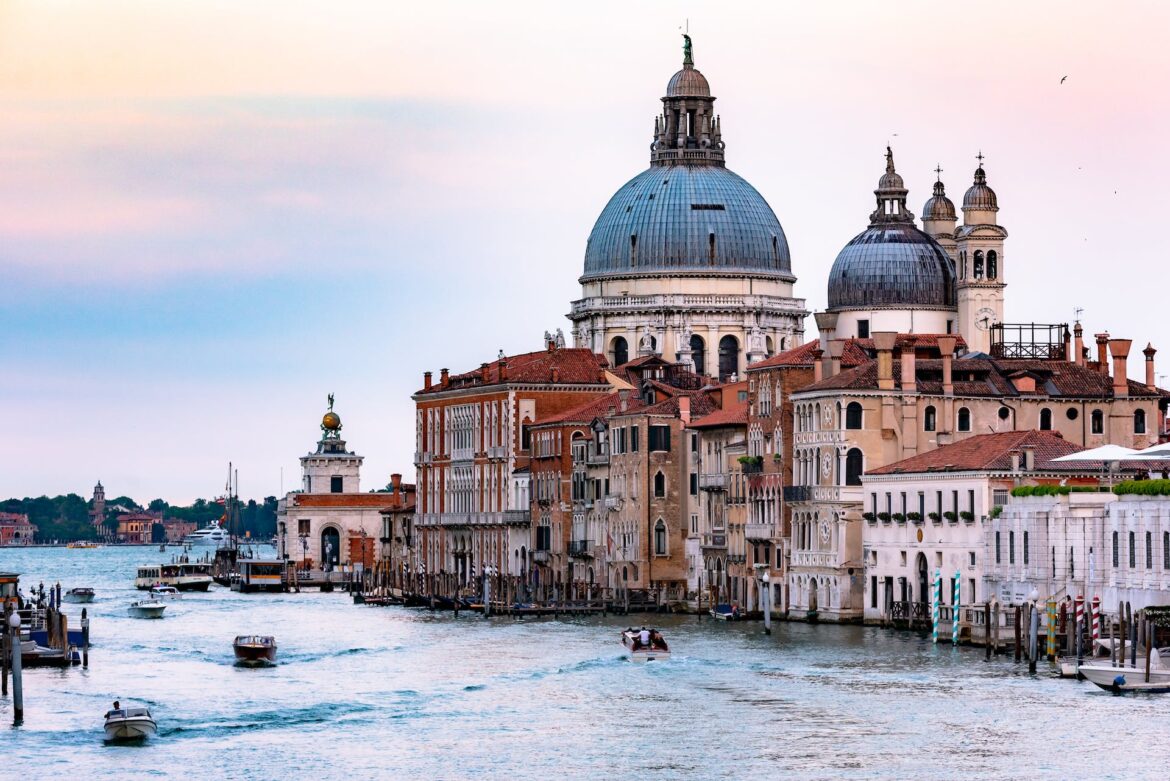Italy is a country rich in history and architectural wonders, and among its many treasures are magnificent castles and basilicas that are must-visit destinations. Castel Sant’Angelo in Rome, originally a mausoleum, now stands as a grand fortress overlooking the Tiber River.
In Vatican City, St. Peter’s Basilica, a symbol of the Roman Catholic Church, astounds visitors with its stunning dome and revered artworks. Moving to the Apulia region, Castel del Monte captivates with its enigmatic octagonal design and panoramic hilltop views.
In Florence, the Basilica of Santa Maria del Fiore (Duomo) showcases remarkable Renaissance architecture and Michelangelo’s awe-inspiring dome. Further north, Castello Sforzesco in Milan impresses with its historical significance and museums displaying art collections.
In Venice, St. Mark’s Basilica enchants with its Byzantine mosaics and intricate design, while Castelvecchio in Verona impresses with its medieval fortress and museum. And finally, in Ravenna, the Basilica of San Vitale mesmerizes with its intricate Byzantine mosaics, creating a spiritual atmosphere.
Each of these castles and basilicas offers a unique journey through Italy’s cultural heritage and architectural brilliance, making them indispensable highlights for any traveler exploring this captivating country.
Castel Sant’Angelo, Rome:
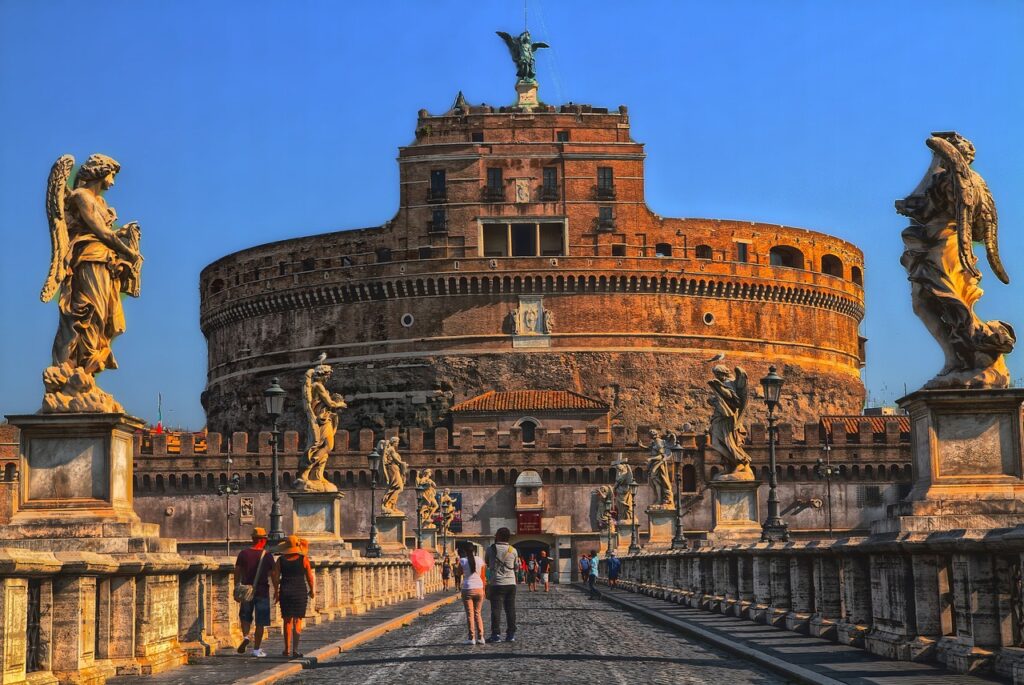
Castel Sant’Angelo, also known as the Mausoleum of Hadrian, is an iconic historical monument located in Rome, Italy. Built by the Roman Emperor Hadrian in the 2nd century AD as a mausoleum for himself and his family, it later served as a fortress and papal residence. The castle’s circular design and towering cylindrical structure make it a distinctive landmark along the Tiber River. Castel Sant’Angelo boasts a rich and storied history. Over the centuries, it has played various roles, from a tomb for Roman emperors to a military fortress and a refuge for popes during times of conflict. Its strategic location, overlooking the Vatican City, has contributed to its defensive significance throughout history. To plan your visit, don’t forget to check the Castel SantAngelo ticket, which ranges from $30 to $40. By securing your tickets in advance, you can ensure a seamless experience.
St. Mark’s Basilica, Venice:
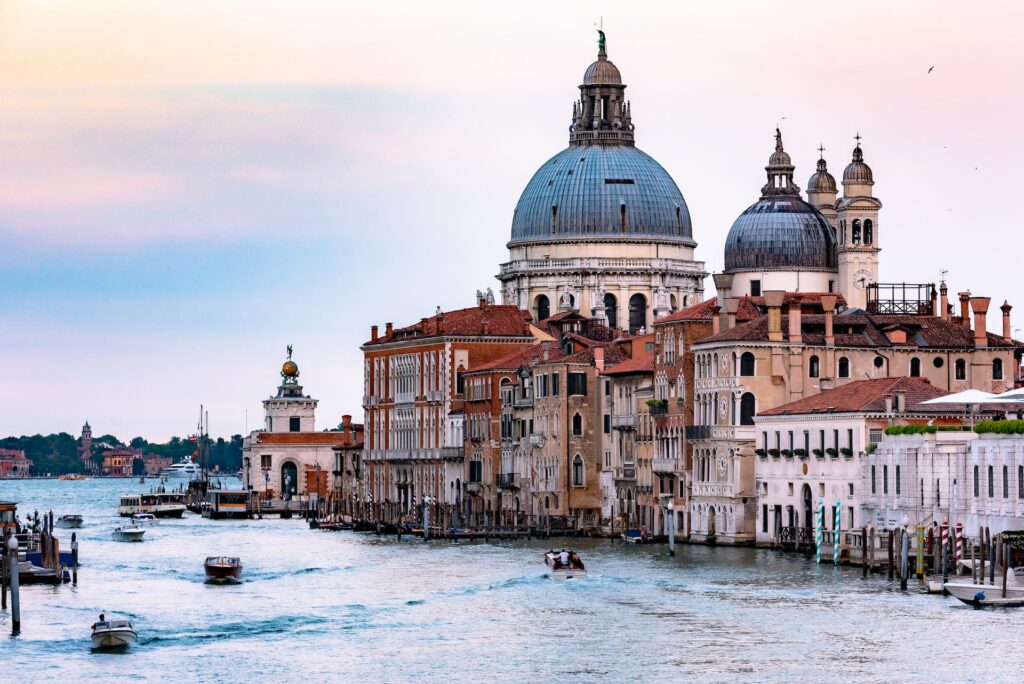
St. Mark’s Basilica, also known as the Basilica di San Marco in Italian, is one of the most iconic landmarks in Venice, Italy. Located in the famous St. Mark’s Square (Piazza San Marco), this magnificent basilica is a masterpiece of Byzantine architecture and an important symbol of Venice’s rich cultural and historical heritage. The construction of St. Mark’s Basilica began in the 9th century and continued over several centuries, with multiple additions and renovations. The basilica’s design is heavily influenced by the architecture of the Byzantine Empire and is characterized by its domes, intricate mosaics, and blend of Eastern and Western elements. Make sure to check out the St. Mark’s Basilica ticket, which ranges from anywhere between $25 and $35, and book your seats in advance.
Castel del Monte, Apulia:
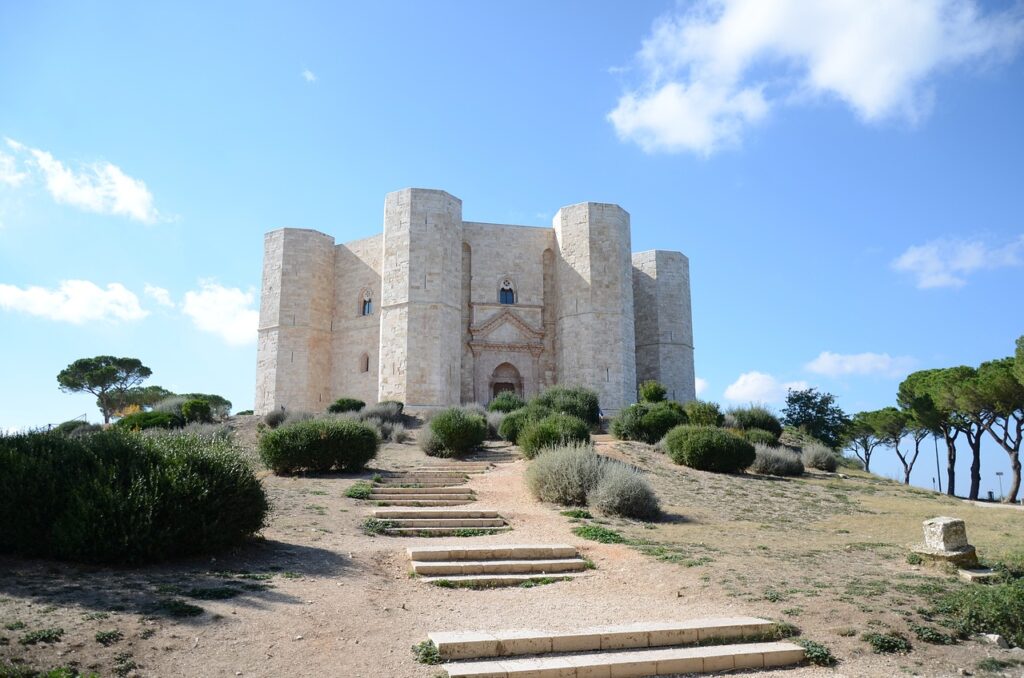
Castel del Monte is a fascinating historical fortress and UNESCO World Heritage Site located in the Apulia region of southern Italy. This unique and enigmatic castle stands atop a hill in the Murgia Plateau, commanding stunning views of the surrounding countryside. The castle was built in the 13th century by Emperor Frederick II, who was known for his interest in architecture and culture. Castel del Monte’s distinct octagonal shape sets it apart from typical medieval castles, adding to its allure and mystery. Its octagonal design is believed to symbolize the number eight, which was considered a symbol of harmony and balance in medieval numerology. To plan your visit, take note that Castel del Monte ticket prices range from $50 to $70. Be sure to keep an eye out for any available Castel del Monte ticket offers to enhance your experience.
Basilica of St. Francis of Assisi, Assisi:
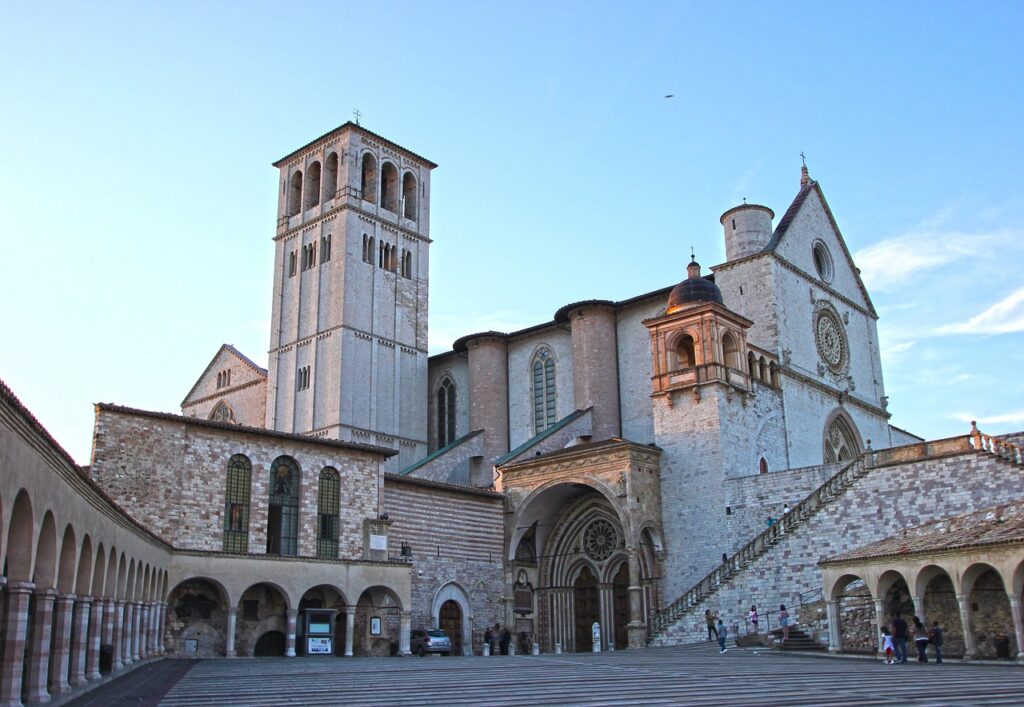
The Basilica of St. Francis of Assisi is a revered religious site located in the picturesque town of Assisi, Italy. This magnificent basilica is dedicated to St. Francis of Assisi, one of the most beloved and influential saints in Christian history. The basilica is actually two churches stacked on top of each other, known as the Upper Church and the Lower Church. Both churches are stunning examples of Italian Gothic architecture, featuring soaring arches, beautiful frescoes, and intricate details. The Upper Church is a masterpiece of medieval art, adorned with breathtaking frescoes depicting scenes from the life of St. Francis and other religious figures. The most famous of these frescoes is the “Life of St. Francis” series by Giotto, considered one of the greatest artistic achievements of the time.
Castello Sforzesco, Milan:
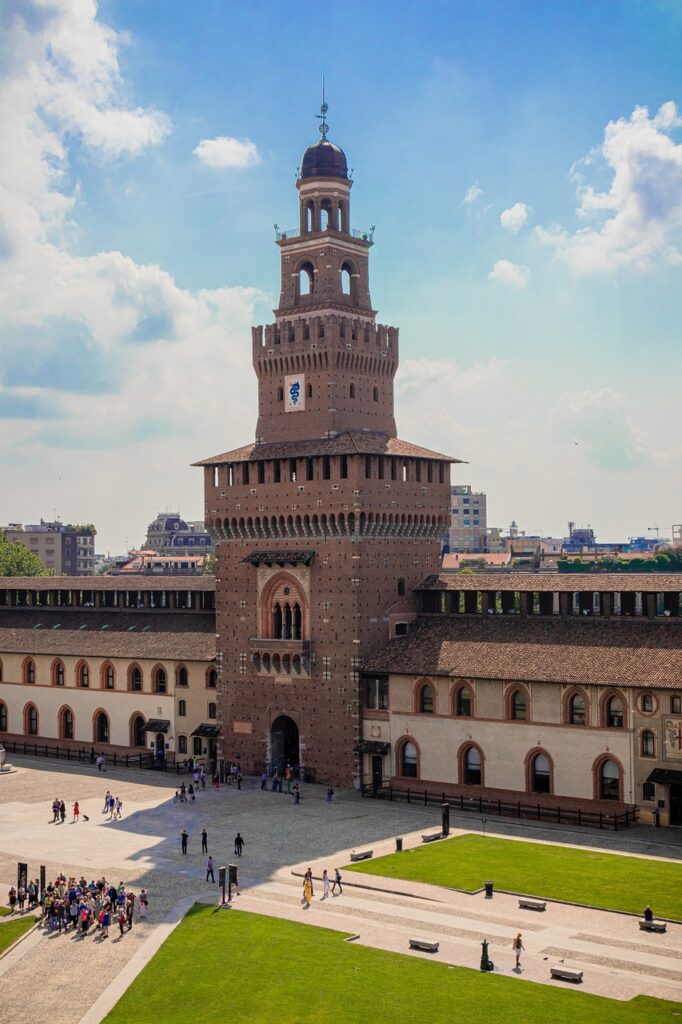
Castello Sforzesco, also known as Sforza Castle, is a prominent historical landmark and architectural gem located in Milan, Italy. Built during the 15th century, the castle was commissioned by Francesco Sforza, a powerful Duke of Milan. Its strategic location within the city’s center made it an essential military fortress during that era. The castle’s architecture showcases a harmonious blend of various styles, including medieval, Renaissance, and neoclassical elements. Its impressive facade features robust towers, imposing battlements, and elegant arcades, exemplifying the grandeur and strength of Italian fortresses of the time. Inside Castello Sforzesco, visitors can explore an array of captivating museums that house an extensive collection of art, historical artifacts, and cultural treasures. Among the notable museums within the castle is the Museum of Ancient Art, which displays a remarkable collection of sculptures, including Michelangelo’s unfinished masterpiece, the “Rondanini Pietà.”
St. Peter Basilica, Vatican:

St. Peter’s Basilica is one of the most significant and revered religious sites in the world, located within Vatican City, an independent city-state surrounded by Rome, Italy. This magnificent basilica holds immense religious and historical importance as the spiritual center of the Roman Catholic Church. The current St. Peter’s Basilica stands on the same spot where the original basilica was built in the 4th century under Emperor Constantine. The present basilica, a masterpiece of Renaissance and Baroque architecture, was constructed over several centuries and was largely completed in the 17th century. To make the most of your visit, ensure you book St. Peter’s Basilica tickets in advance. By purchasing these tickets, you can bypass the long queues and fully immerse yourself in the splendor of this remarkable basilica. Discover the spiritual and artistic wonders of St. Peter’s Basilica firsthand.
Castello Estense, Ferrara:
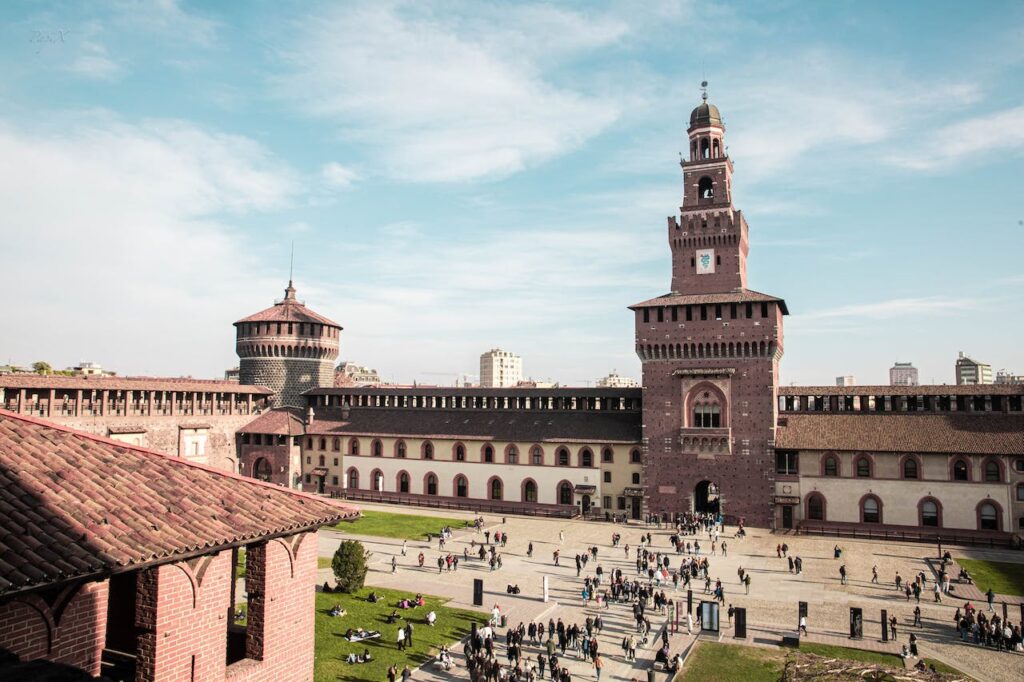
Castello Estense, also known as Estense Castle, is an imposing medieval fortress located in the charming city of Ferrara, Italy. This historic castle holds a central place in Ferrara’s cultural heritage and offers visitors a glimpse into the city’s storied past. The castle was constructed in the 14th century by the ruling Este family, who were powerful rulers of Ferrara during the Renaissance era. Castello Estense served as their residence and a symbol of their authority. Its strategic position, surrounded by a moat, made it a formidable defensive structure. The architecture of Castello Estense showcases a unique blend of medieval and Renaissance styles. Its sturdy brick walls, massive towers, and drawbridges are reminiscent of traditional fortresses, while its elegant arcades and decorative elements exhibit Renaissance influences.
Basilica of Santa Maria del Fiore (Duomo), Florence:
The Basilica of Santa Maria del Fiore, commonly known as the Duomo, is an iconic masterpiece of Renaissance architecture located in the heart of Florence, Italy. This breathtaking cathedral is one of the most famous landmarks in the city and a symbol of Florence’s rich cultural heritage. Construction of the Duomo began in the 13th century and continued for several centuries, with various architects and artists contributing to its design and embellishments. The cathedral’s exterior is adorned with a magnificent marble facade, intricate sculptures, and beautiful stained glass windows, reflecting the artistic brilliance of the Renaissance period. The most striking feature of the Duomo is its massive dome, designed by Filippo Brunelleschi. This architectural marvel is a testament to Brunelleschi’s ingenuity and engineering prowess, as it remains the largest masonry dome in the world. Visitors can climb to the top of the dome for panoramic views of Florence’s skyline and the picturesque Tuscan countryside.
Castelvecchio, Verona:
Castelvecchio, meaning “Old Castle” in Italian, is a remarkable medieval fortress located in the enchanting city of Verona, Italy. This historical landmark holds significant cultural and architectural importance, making it a must-visit destination for history enthusiasts and travelers exploring Verona’s rich heritage. The castle was constructed in the 14th century by Cangrande II della Scala, a powerful ruler of Verona, as both a military stronghold and a residence. Castelvecchio served as a defensive fortress protecting the city, with its robust walls, watchtowers, and fortified bridges spanning the Adige River. The architecture of Castelvecchio showcases a blend of medieval military design and elegant Gothic aesthetics. Its red-brick exterior and crenelated battlements evoke a sense of strength and security, while its graceful arches and decorative elements add a touch of artistic charm.
Basilica of San Vitale, Ravenna:
The Basilica of San Vitale is a stunning early Christian church located in the city of Ravenna, Italy. This remarkable basilica is renowned for its exquisite Byzantine mosaics, making it one of the most important examples of Byzantine art and architecture in the Western world. Built in the 6th century AD, the basilica is dedicated to Saint Vitalis, a Christian martyr. It is a UNESCO World Heritage site and holds immense significance for its historical and artistic value. The exterior of San Vitale is rather unassuming, with its simple brick facade. However, upon entering the basilica, visitors are greeted by a breathtaking interior adorned with dazzling mosaics covering the walls and ceilings. The most famous mosaic in the basilica is the “Mosaic of Justinian and Theodora” located in the apse. This exquisite work depicts Emperor Justinian I and his wife, Empress Theodora, surrounded by their court. The mosaic showcases vivid colors, intric.
